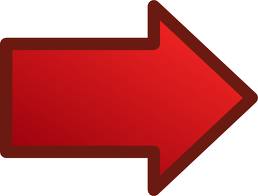 Referrals have been exchanged with triplicate paper forms and faxes for what seems like an eternity. And with the quantity of referrals going up over the last decade (from 41 million to 105 million per year) it’s only becoming more troublesome.
Referrals have been exchanged with triplicate paper forms and faxes for what seems like an eternity. And with the quantity of referrals going up over the last decade (from 41 million to 105 million per year) it’s only becoming more troublesome.
Not only are triplicate forms un-trackable; Users cannot easily verify quantity of referrals exchanged, service line utilization (how many types of services are being referred), or payer mix (what types of insurances are being accepted the most), but are time consuming to fill out and verify.
We surveyed many doctors and asked them how they sent, received, and managed their referrals. And we found that the majority are still using antiquated paper methods such as triplicate forms and faxes.
Let’s walk through a typical day with a local neurologist that we had a pleasure to meet.
Office stats:
• 5 staff that managed referrals
• Receives an average of 350 referrals a month, sends 200
• Doctor has over 50 types of paper referral forms from different organizations in the back office that they have to maintain and keep stocked.
• Each staff spends 3 to 5 hours each a day managing the referral process. (Average staff time: 15 to 25 hours a day on referrals)
• Total time managing a single patient referral (average 45min to 90min – Handwriting information, verifying, getting a signature, faxing, re-faxing, calling on phone to verify, filing, looking for referral, etc.)
• The average cost spent per referral was over $30 in hard costs and labor – Total monthly spent managing referrals was $9,000 to $16,500 a month which includes both staff and the doctor’s time.
Receiving a Referral:
 When we arrived at the office, we sat and observed the typical workflow of patients having to hand deliver their triplicate forms to the office staff, and many cases having the staff call the referring location to send additional information or a new referral slip via fax because the patient had forgotten it.
When we arrived at the office, we sat and observed the typical workflow of patients having to hand deliver their triplicate forms to the office staff, and many cases having the staff call the referring location to send additional information or a new referral slip via fax because the patient had forgotten it.
The time it took to call into the other office, wait on hold, finally find a staff member on the other side that could resend the fax, and hopefully receive all the documents, took a long time.
In some cases the patient was asked to bring in files that could not be faxed, and they were asked to go back to the originating referrer and ask for copies (Not patient friendly)
Now you know why they ask you to come so early to the appointment and rarely see you on time – it’s because all the back office work that requires the staff to find your data before they can see you.
After the appointment was held, in many cases the referring doctor would like to see stats on the patient (What day the appointment was held, did the patient show, diagnosis, etc.) Follow up communication post-appointment was minimal and both parties rarely stayed in contact after the appointment. When asked if they would like to be able to easily access this information on a per referral basis the answer was an affirmative yes!
Sending a Referral:
 In some cases after an appointment, the patient has to be referred out to another specialist for additional treatment which brings up more challenges.
In some cases after an appointment, the patient has to be referred out to another specialist for additional treatment which brings up more challenges.
To those reading this article about referrals, most understand every healthcare organization has their own unique referral slip (either triplicate form or fax cover sheet) that they use to exchange referrals. The job of the receiving organization to distribute their forms to other providers can be problematic. (Consistently asking the staff that send referrals to reorder additional copies of your slip when they run low. This process is both inefficient and costly.
To start sending a referral the staff at the neurologist’s office would begin by looking for a specific referral form in the back office (in some cases they were out of the forms and had to improvise) Once found they would sit down and hand-write specific information about the patient, hand a copy to the patient (hope they don’t lose it) and then fax a copy to the receiving party. In many cases the fax wasn’t received properly, or during the follow up phone call the staff on the other end would ask for additional information which would start the process over again.
Executive Wish List:

Doctors and executives alike that we spoke with just want a simple tool that they could use to accurately verify referral status and number of referrals their business was generating. A quick view of key reports that showed who sent them referrals, where they sent the most referrals to, and which of their referral contacts and staff were the most efficient.
Simplicity was the most requested feature. They did not want a full-fledged application that was to complex or already had overlapping functionality that they did not need. Those applications cost too much and take IT staff to install and a large amount of time to implement. ReferralMD is simple and only takes minutes to set up, and any staff can use start exchanging referrals immediately.
Whats your thoughts?
What is your experience with referrals? Feel free to share your comments below










